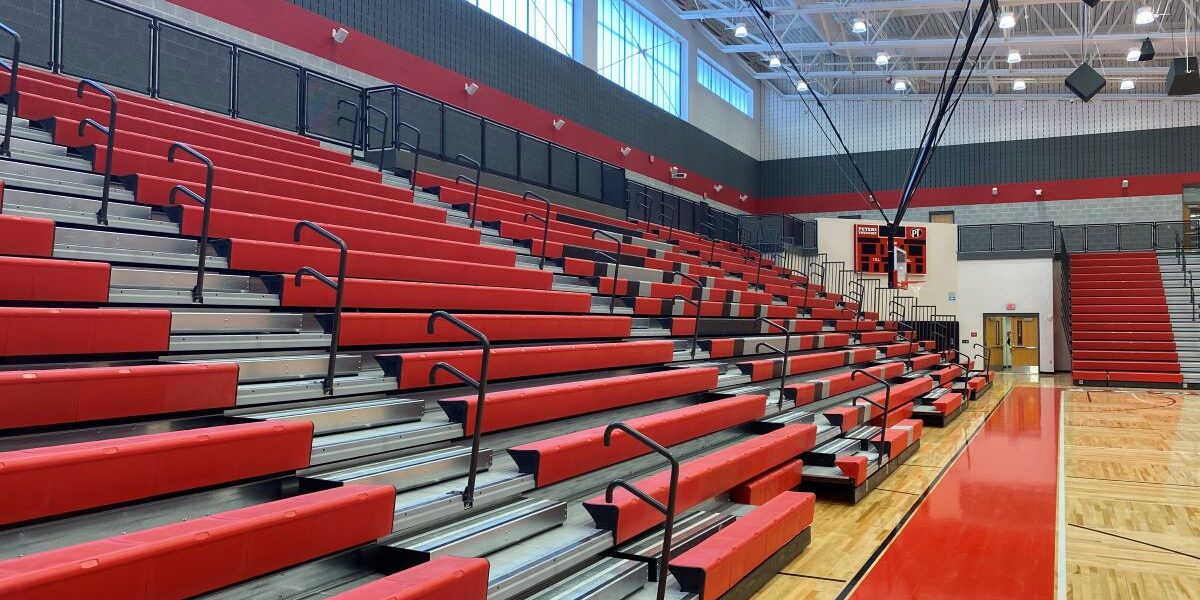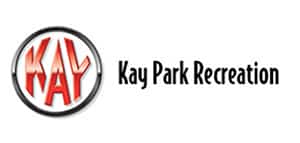When it comes to creating a comfortable and functional space for athletic events, assemblies, and performances, school gym bleachers play a vital role. Selecting the right bleachers is essential for ensuring the comfort, safety, and overall experience of both participants and spectators.
- ASSESSING YOUR NEEDS
DETERMINING CAPACITY REQUIREMENTS
Before choosing gym bleachers, it’s important to analyze the average attendance and maximum capacity of your gymnasium. This will help determine the appropriate seating capacity needed to accommodate your events.
Consider the flexibility of seating arrangements, such as telescopic or retractable bleachers, which allow you to adjust the seating capacity based on event sizes.
UNDERSTANDING SPACE CONSTRAINTS
Evaluate the available space in your gymnasium and consider any limitations or specific requirements for bleacher installation. Take into account factors such as clearance space, row spacing, aisles, and accessibility for individuals with disabilities.
When thinking about space constraints, one area that is commonly forgotten about is the space needed between your bleachers and where the basketball court begins in a gym. This can vary depending on factors such as safety regulations, local building codes, and the specific design of the bleachers and gymnasium.
Many jurisdictions have specific regulations that dictate the minimum clearance required between bleachers and the court. These regulations are often designed to ensure the safety of spectators and athletes.
As a general guideline, a common recommendation is to have a clearance of around 3 to 4 feet between the bottom of the bleacher seats and the gym floor. This allows for safe movement, cleaning, and accessibility. However, this is a rough estimate, and you should always refer to local building codes and safety regulations to ensure compliance.
Row spacing is another constraint to think through when going over options for your facility. Row spacing is the room between one seat where a spectator sits and the seat in front of them.
Shorter row spacing will increase the seating capacity of the space but decrease the legroom and comfort of your spectators. In turn, longer row spacing will then give more legroom to each spectator, but the facility won’t be able to seat as many people.
By understanding the overall space constraints, you can choose bleachers that fit best with the goal of your space and maximize seating or comfort while maintaining safety and convenience.
- SAFETY AND COMPLIANCE
ENSURING STRUCTURAL INTEGRITY
When selecting gym bleachers, it is crucial to prioritize safety. Choose bleachers that meet industry standards and safety regulations. Consider factors such as weight capacity, stability, and durability to ensure the structural integrity of the bleachers. This will provide a secure seating solution for everyone using the facility.
ADA COMPLIANCE
Accessibility is an important aspect to consider. Ensure that your bleachers comply with ADA guidelines, providing accessibility for individuals with disabilities. Features such as wheelchair spaces, companion seats, and appropriate clearances should be incorporated into the design of the bleachers. This allows all members of the community to participate and enjoy events without any barriers.
- COMFORT AND CONVENIENCE
SEAT AND BACKREST DESIGN
The design of the seats and backrests greatly impacts the comfort of your seating solution. Consider different options, such as bench-style or individual seats, and choose materials that provide adequate support and cushioning. Ergonomics play a crucial role in ensuring comfortable seating for extended periods.
SAFETY FEATURES
Safety should never be compromised. Look for bleachers with safety features such as non-slip surfaces and handrails to prevent accidents. These features contribute to a safer environment for everyone using the facility.
- CUSTOMIZATION AND FLEXIBILITY
CUSTOMIZATION OPTIONS
Personalize your gym bleachers to reflect your school’s identity. Explore customization options such as choosing colors that align with your school’s branding or adding logos to promote school spirit. By incorporating these elements, you can create a sense of pride and unity among students, faculty, and spectators.
FLEXIBLE SEATING CONFIGURATIONS
Consider the benefits of telescopic or retractable bleachers, which offer flexibility in seating arrangements. Telescopic bleachers can accommodate large crowds when you need them and slide flat when not in use for easy storage.
Tip N’ Roll bleachers are another option. These lightweight and easy-to-move bleachers are ideal for multifunctional facilities. They can be easily adjusted or folded to maximize space utilization. Retractable or folding options provide versatility for different events and activities held in the gymnasium.
MAINTAINING BLEACHER SAFETY
It’s your duty to ensure the safety of your audience by taking the necessary measures to maintain the safety of your bleachers.
SIGNS THAT INDICATE NEED FOR MAINTENANCE
It’s crucial to be aware of signs that indicate the need for maintenance, including bleachers that don’t move under their own power, don’t travel straight, make scraping, squealing, or banging noises, or leave marks on the floor. At a minimum, bleachers should be inspected every two years to ensure they are in good working condition. For operation, a yearly preventative maintenance check is recommended.
CHECKING THE BLEACHER SEATS
Checking the seats on your bleachers is also crucial to prevent injuries. Signs that indicate the need for maintenance include cracked, broken, loose, or missing seats, uneven seat spacing, and sharp edges on seat frames. Addressing these issues promptly is essential to ensure the safety of your audience.
CHECKING THE BLEACHER TIRES
In addition to checking the seats, it’s important to regularly check the tires on your bleachers. Signs that indicate the need for maintenance include hard and dry floors, tires full of floor finish, leaving marks on the floor when moved, losing traction, and appearing worn away or crumbling like a pencil eraser. By keeping an eye on the condition of your bleacher tires and addressing any issues promptly, you can ensure the safety and comfort of your audience.
BLEACHER STANDARDS & REGULATIONS
When it comes to safety, it’s important to call a professional with specifics. There are different sources of regulations, and each one can affect inspection timelines. Not only do you need to meet your state bleacher standards, but you also need to meet national fire code standards.
Your insurance provider may require your bleachers to meet international building codes such as ICC 300 or even the Consumer Safety Commission standards. A professional can help you navigate these codes and ensure that your bleachers are safe to use.
Choosing the right school gym bleachers is crucial for creating a comfortable, safe, and functional space for athletic events, assemblies, and performances. By considering factors such as capacity requirements, safety and compliance, comfort and convenience, and customization options, you can make an informed decision.
This information is courtesy of H2I Group, a full-service specialty subcontractor building exceptional spaces and relationships across the United States, www.h2igroup.com.















